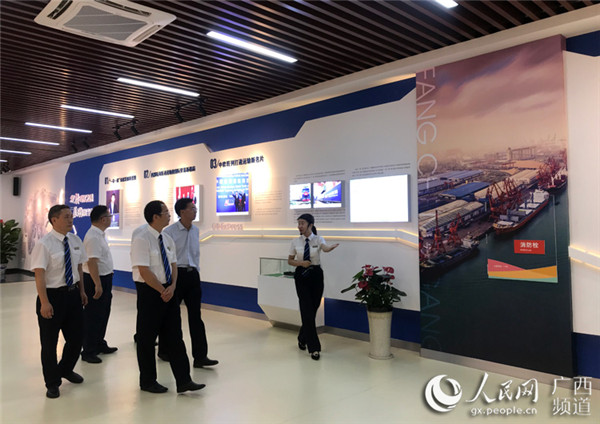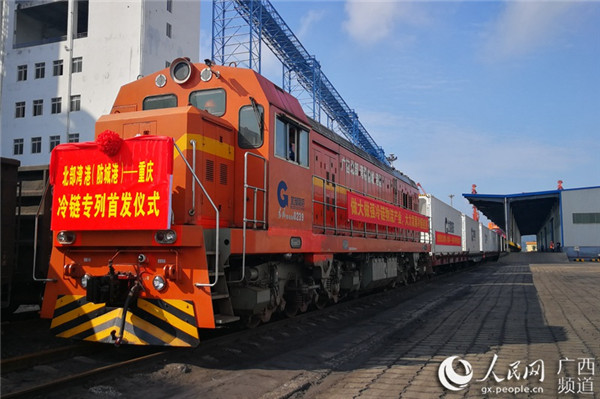Intl land-sea corridor exhibition hall makes debut in Fangchenggang
An exhibition hall themed around the New International Land-Sea Trade Corridor made its debut in Fangchenggang, Southwest China's Guangxi Zhuang autonomous region on May 16.
The hall, which is the first of its kind in Guangxi, was launched by Fangchenggang Railway Station of the Guangxi Yanhai Railway Company. It showcases the latest achievements the company has made in connecting the Belt and Road Initiative and the New International Land-Sea Trade Corridor.

The theme hall, occupying an area of almost 300 square meters, aims to highlight the benchmark role that Guangxi Railway has played in the development of the New International Land-Sea Trade Corridor. [Photo/gx.people.cn]
In recent years, all departments of Guangxi Railway have actively integrated into the development of the land-sea trade corridor, and promoted the combined transportation consisting of rail-sea and highway-railway transit.
Fangchenggang Railway Station is one of the largest freight stations in Guangxi, and delivered 37.16 million metric tons of cargo in 2018, an increase of 10 percent year-on-year, accounting for one third of the total number of China Railway Nanning Group's. Since the first cold chain express launched in 2016, Fangchenggang Railway Station has achieved normalization on the operation of five cold chain lines to Beijing, Shanghai, Shenyang, Jinan, and Chongqing, setting a benchmark for cold-chain logistics throughout the country.

The first cold-chain sea-rail train of the land-sea trade corridor leaves Fangchenggang for Chongqing on Oct 26, 2018. [Photo/gx.people.cn]
Exhibited in the form of stories, photos, and multimedia, the theme hall vividly portrays the contributions Guangxi Railway has made in the construction of the land-sea trade corridor, which will speed up the creation of a new pattern for all-around opening up, as well as give a boost to the high-quality development of the regional economy in the Beibu Gulf.
